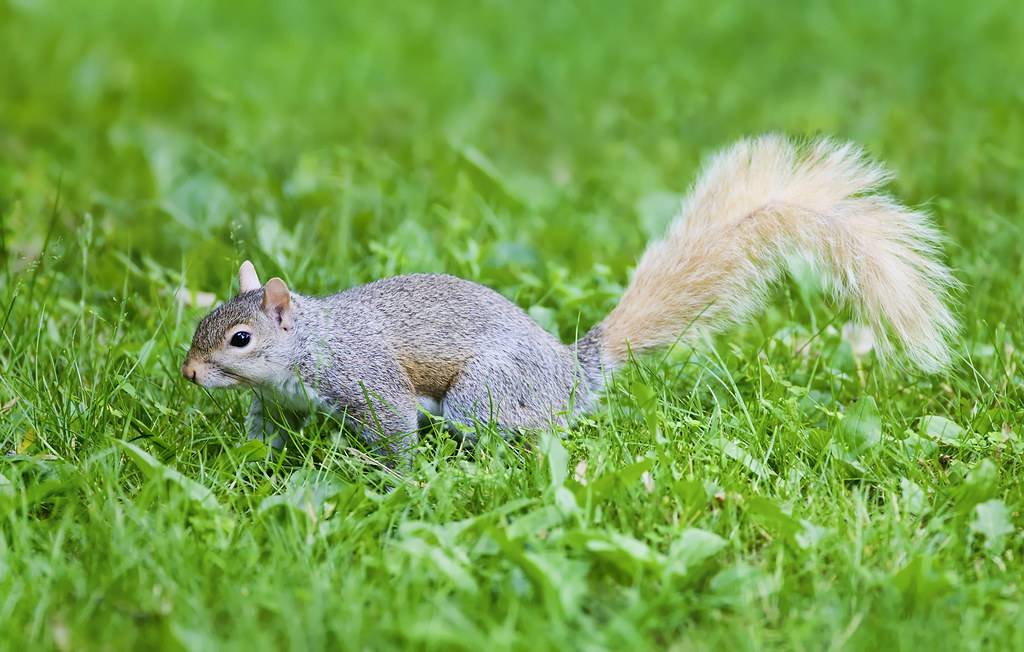Grey squirrels (Sciurus carolinensis) are fascinating creatures known for their nimble movements and iconic bushy tails. While the majority of grey squirrels exhibit the expected gray coloration in their tails, sightings of individuals with blonde or light-colored tails have piqued curiosity. In this article, we will explore the reasons behind the variation in tail coloration among grey squirrels, delving into the genetic, seasonal, and age-related factors that contribute to this captivating phenomenon.


Why Do Some Grey Squirrels Have Blonde Tails?
Genetic Variation and Tail Coloration: One of the primary reasons for the presence of blonde tails in grey squirrels lies in their genetic makeup. Like many other animal species, grey squirrels exhibit genetic diversity within their populations. Different genetic traits can manifest in a range of physical characteristics, including tail coloration. Some individuals may carry genes that result in lighter pigmentation in their tails, leading to a blonde or lighter-colored appearance. This genetic variation adds to the aesthetic diversity of grey squirrels, showcasing the intricacies of nature’s designs.
Seasonal Variation and Molting: The seasons play a significant role in the appearance of a grey squirrel’s tail. During the winter months, grey squirrels undergo a natural process called molting. Molting involves shedding the old fur and growing a fresh coat. As squirrels shed their worn-out fur and new fur begins to grow, variations in tail coloration can occur. In some individuals, the new fur may grow in lighter in color, resulting in a blonde or lighter-colored tail. This seasonal adaptation helps grey squirrels camouflage themselves in snowy or lighter environments, providing them with a survival advantage.
Age and Tail Coloration: Another factor influencing tail coloration in grey squirrels is age. Younger squirrels often exhibit lighter-colored tails compared to their more mature counterparts. As squirrels age, their fur tends to darken and become more consistent with the typical gray coloration. This means that a blonde tail in a grey squirrel could indicate its youthful age. Observing squirrels with blonde tails can serve as a visual cue to identify younger members of the population. The gradual darkening of their tail coloration as they mature is an intriguing aspect of the squirrels’ life cycle.
The Fascinating Diversity of Grey Squirrels: The presence of grey squirrels with blonde tails is a testament to the fascinating diversity within the species. These variations highlight the complex interplay of genetic factors, seasonal adaptations, and age-related changes. The natural world never ceases to amaze with its ability to produce unique and beautiful traits, even within a single species.
The mystery of why some grey squirrels have blonde tails has been partially unraveled through our exploration of genetic variation, seasonal molting, and age-related changes. These factors collectively contribute to the captivating array of tail coloration observed in grey squirrels. As we marvel at the diverse beauty of these acrobatic creatures, let us cherish the wonders of nature and deepen our understanding of the fascinating adaptations that exist within the animal kingdom.
The Cultural and Historical Significance of Grey Squirrels with Blonde Tails
Grey squirrels with blonde tails have captured the imagination and folklore of various cultures throughout history. In many Native American tribes, the squirrel holds a special place as a sacred animal symbolizing preparedness, resourcefulness, and agility. The presence of a grey squirrel with a blonde tail may be seen as a sign of good fortune or a messenger from the spirit world.
In European folklore, squirrels in general are often associated with cleverness, agility, and adaptability. The sighting of a grey squirrel with a blonde tail may be considered a rare and mystical occurrence, believed to bring luck or signify a special event. In some tales, they are even portrayed as magical creatures capable of communicating with other woodland animals.
The cultural significance of grey squirrels with blonde tails is also intertwined with their introduction to new habitats. In the United Kingdom, where they were introduced from North America, grey squirrels became a symbol of adaptation and resilience. They are often depicted in British literature, art, and popular culture, representing a connection to nature and the countryside.
Furthermore, the introduction of grey squirrels with blonde tails in regions where they are non-native has sparked fascination and cultural discussions. Their unique appearance has caught the attention of artists, photographers, and wildlife enthusiasts, inspiring creative works that celebrate the diversity of nature.
In conclusion, grey squirrels with blonde tails hold cultural and historical significance in various societies. They have been revered as symbols of luck, agility, and adaptability in folklore, and their presence has influenced artistic expressions. Whether through spiritual beliefs or artistic interpretations, these enchanting creatures continue to captivate our imaginations and remind us of the cultural richness intertwined with the natural world.
Why is my parakeet puffed up and shaking?
Are Lubber Grasshoppers Poisonous To Dogs?
Can My Baby Eat Laughing Cow Cheese?
You have twice as many female ancestors as male ancestors
Why Does My Poop Smell Like Cow Manure?
This story originally appeared on Mostexpensivething

